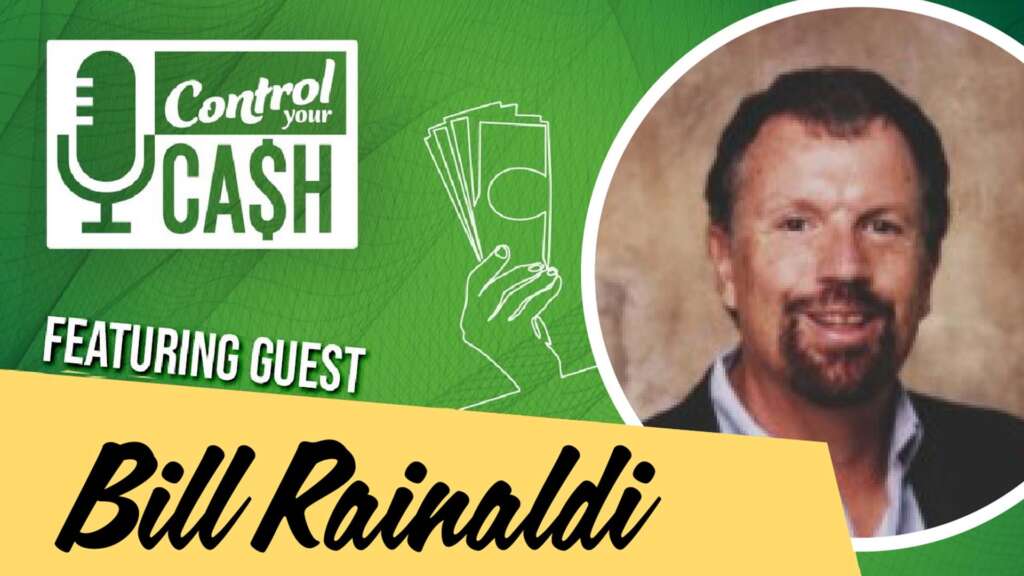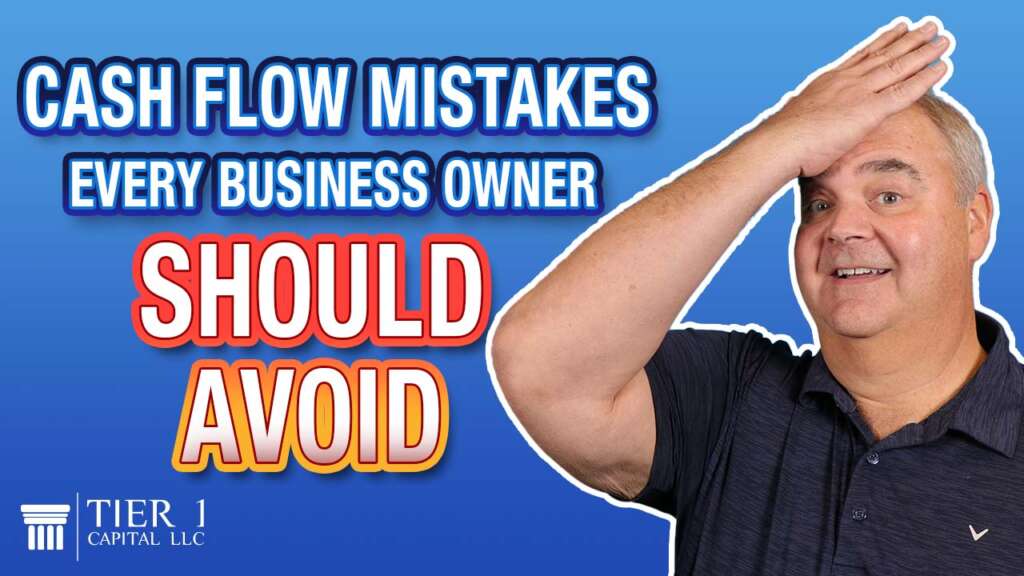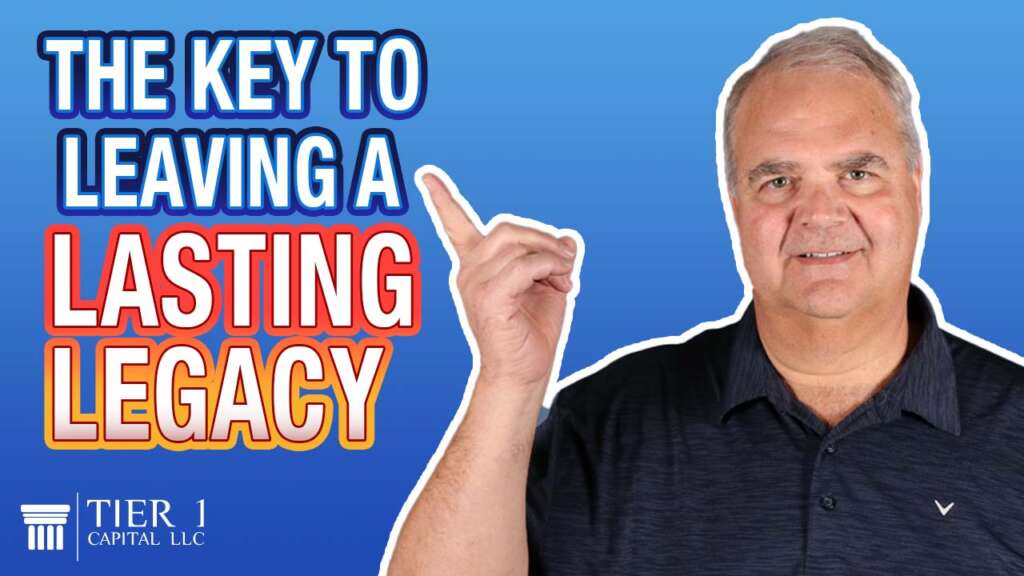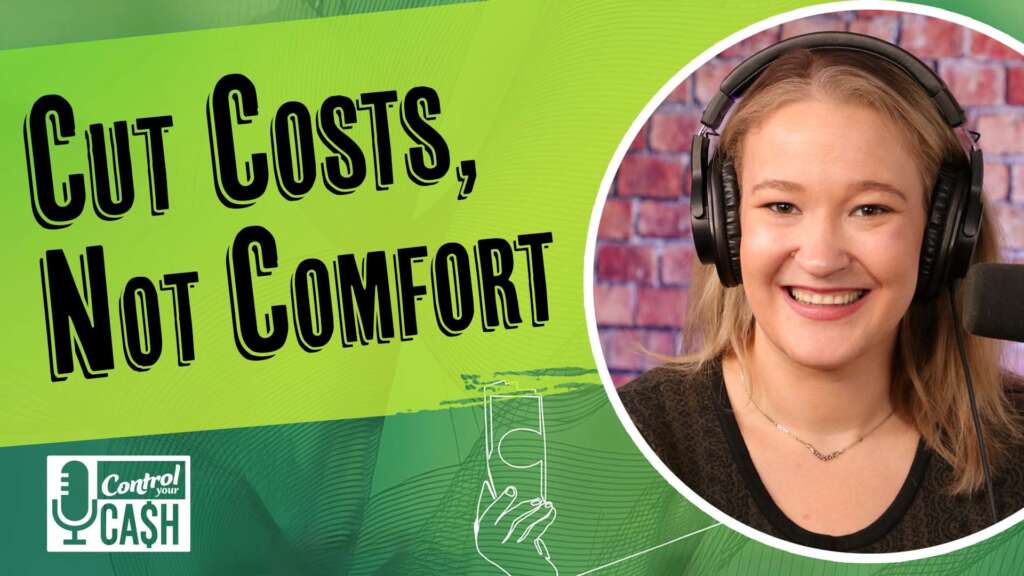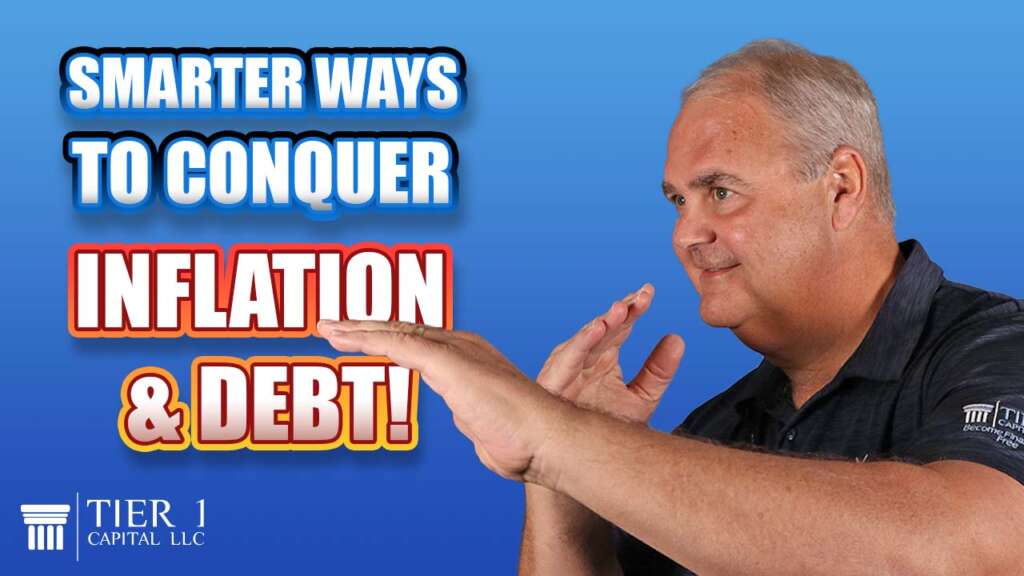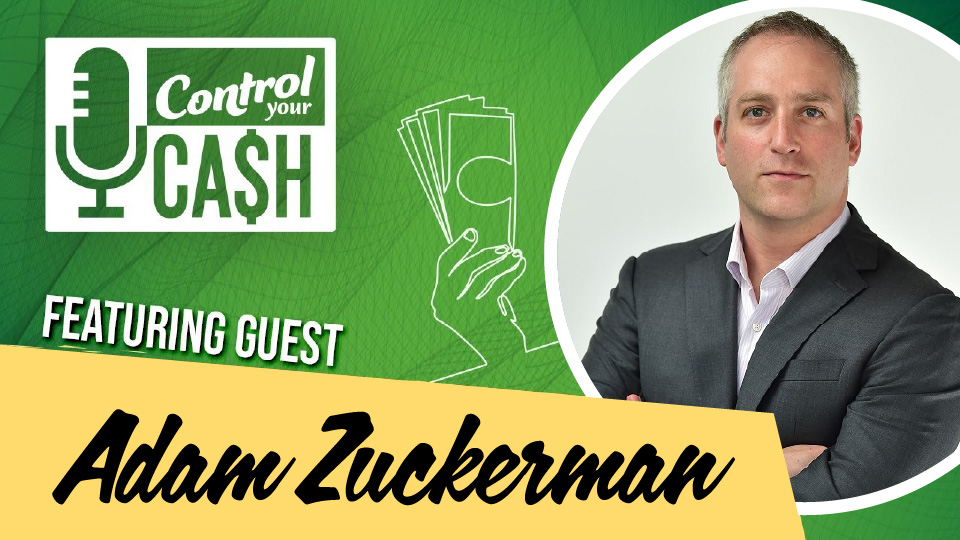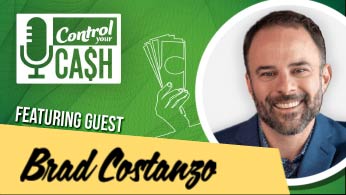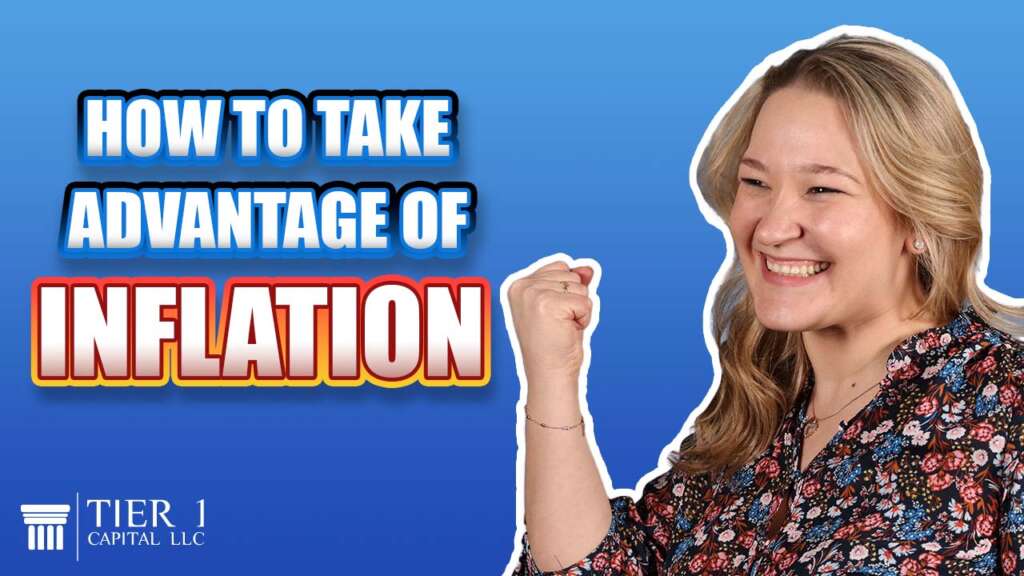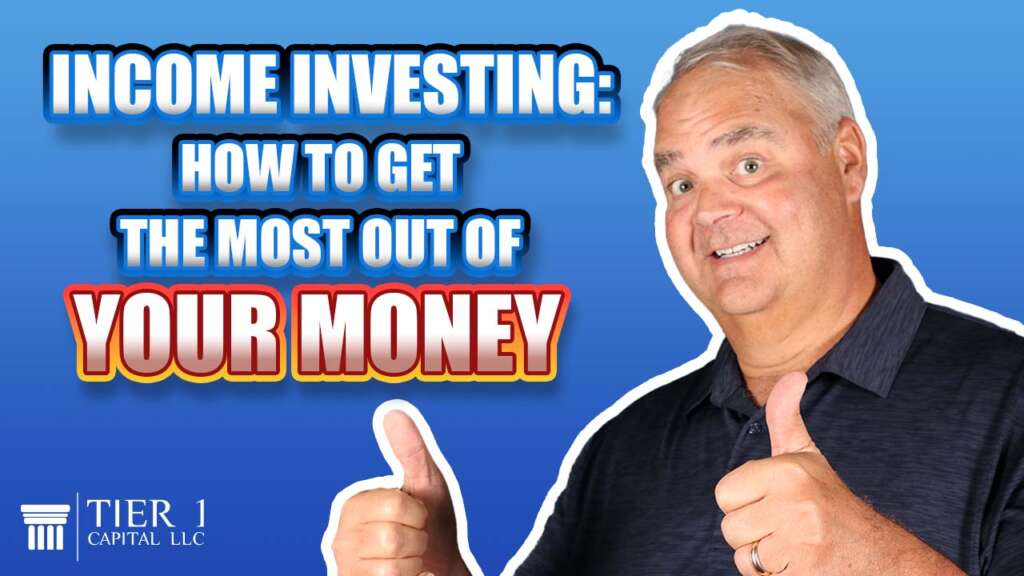In this episode of the “Control Your Cash” podcast, hosts Olivia Kirk and Tim Yurek welcome Brad Costanzo, the founder of Accelerated Intelligence A.I. Brad is an AI and business innovation consultant who helps organizations leverage the power of artificial intelligence to drive business growth through innovative strategies. Throughout the episode, Brad shares his insights on the rapid evolution of AI and how it can transform business processes to increase productivity, creativity, and profitability. He discusses the anxiety that comes with trying to keep up with constant technological advancements and provides practical advice on how to strategically implement AI in business operations without becoming overwhelmed. Brad also introduces his “Five Bucket Framework” for AI integration, covering thinking, creating, communicating, analyzing, and automating, and shares actionable tips for both tech novices and experienced users to maximize AI’s potential in their work.
Brad Costanzo is the founder of Accelerated Intelligence A.I., a leading consultancy that specializes in integrating artificial intelligence into business strategies for enhanced growth, productivity, and profitability. With a deep expertise in harnessing AI, Brad has distinguished himself as a pioneer in using innovative technologies to drive business success. His work focuses on empowering organizations to leverage AI for creating powerful content, automating processes, and optimizing communication strategies. Through his hands-on approach, Brad provides tailored solutions that not only streamline operations but also deliver measurable results, making him a trusted advisor for businesses looking to stay ahead in the rapidly evolving tech landscape.
Transcript
Olivia:
Hello and welcome to the Control Your Cash podcast. I’m your host, Olivia Kirk.
Tim:
And I’m your co-host, Tim Yurek. Today we have a great show in store for you.
Olivia:
We have with us Brad Costanzo. Brad, thank you so much for joining us.
Brad:
Thanks for having me. It’s exciting to be here.
Tim:
Brad is a really interesting guy. We worked with him recently. Brad is the founder of Accelerated Intelligence A.I. and an AI and business innovation consultant who empowers organizations to harness and transform the power of artificial intelligence. With a deep commitment to driving business growth through innovative strategies, Brad has distinguished himself as a leader in integrating AI with business processes to enhance productivity, creativity, and profitability. So we have a great show in store for you, and Brad, again, it’s great to have you.
Brad:
Yeah, it’s great to be here, and those are just fancy words to say I use tech to do my work for me and show other people how to do it, which is how we linked up. So yeah, it’s been fun working with you guys. It’s a really interesting field, and it’s changing all the time. It’s never a dull moment. That’s actually one of the problems—it’s never a dull moment. I’m like, slow down, let me catch my breath, but it’s fine.
Tim:
Well, just to add on to that, it’s amazing to me, Brad, to see some of the developments that have occurred from the very brief time we started to the time we actually implemented certain concepts. It was mind-blowing to me how quickly the technology has changed and moved forward. It’s amazing.
Brad:
Yeah, it feels like I put my head down for a week to work on a project, and I pick my head up, and somebody’s already solved that project with another piece of software. You push a button, and it’s done. That part’s frustrating, but it’s also great because the innovation is happening so quickly. That’s both a really good thing and a really bad thing because it can create this level of anxiousness and anxiety, especially if you’re a professional or a business owner trying to stay on top of this and adopt it. But it can be happening so quickly.
Brad:
I like to say that AI, in general, is the new shiny object, but it’s the one you can’t afford to ignore because it’s coming, and you’ve got to find a way to wrap your head around how to use it. That anxiousness and anxiety can come in when you’re trying to stay on top of all the new things. I think that’s what I try to tell my clients, and I’ve had to do this myself: don’t pay attention to all the most edgy cases, like the newest thing today, the newest thing tomorrow. Give it a little time to mature. Stick with the base areas. We can talk a lot about how to find that, but in the beginning, it was like a full-blown sprint out of the gate. Everybody’s running, running, running, and then you find yourself getting tired like, oh my God, now I really can’t keep up with all of this.
Brad:
There’s a concept we can talk about called diminishing marginal utility of artificial intelligence. I don’t know—have we ever talked about that in our private sessions?
Tim:
No, tell us more.
Brad:
This is just a—you know, I was thinking about this before because there are so many things AI can do. I can help you with this and that—everything from coming up with great plans to creating all your content and books and chatbots. There are thousands of things it can do. But as a business owner, professional, or executive, there are only so many things that actually need to happen to move the needle in your business and life. You want to attract more people to your business, convert those into customers or clients, retain them, and give them a better service experience. Yes, AI can create 30-second really cool video clips that would take somebody else—but are those going to move the needle in your business? Probably not. I can create really cool little designs in Midjourney and do all this other stuff, and I can create cartoons and graphics. But if that’s not part of my business, learning how to do every little thing on those edge cases that it can do—I’m not going to have any use case for it. The more you try to utilize AI in every aspect of your business, the more you realize that, wait a minute, these aren’t needle movers. So that’s that diminishing utility of trying to stay on top of every single innovation.
Brad:
I also say this from the lens of—I am not a technologist, I’m not a computer programmer, I’m not an engineer. I am a serial entrepreneur and growth consultant, and that’s what I look for. I look for what’s going to make a difference in my and my client’s business. Will it help me attract, convert, or retain customers and clients? Will it make me more revenue or profit because it’s reducing expenses? Will it free up my time to do other things? Will it unleash creative pursuits? If it doesn’t do those things, I try to filter those out and say, okay, what’s the handful of things that are going to really, really help, and then ignore the rest for a while. When I’ve told other clients and people this, it gives them relief that, okay, maybe I don’t have to stay on top of every single new innovation out there. It’s good to pay attention to what’s possible, but trying to master all that stuff—it’s really not necessary. I like to go in and say, what’s nice to have, what’s need to have, what do we do now, next, and never? Does that make sense?
Tim:
Well, based on what you just said, right? I’m going through in my mind, okay, talking about our journey together. We did our initial call, and you basically gathered a bunch of information as to what we were looking to help us move our needle, right? Then you came back and addressed most of those issues, if not all of them, and you prioritized which ones we should implement exactly, and basically almost in the order that was of most importance and most value, right?
Brad:
Exactly, exactly. I think of this as on a level of—I call this like ICE: what’s the level of impact it’ll have, what’s your confidence in that impact, and how easy is it going to be? I like to go after the high-impact, easy projects first. I kind of score them like that. If there’s a—think about it—you and I do this oftentimes: create a spreadsheet and go on a scale from 1 to 10. Here are 10 projects. If this works, what impact will it have on my business? Let’s say it creates a whole new channel of communication—like, that’s great, this was a problem before, it’s no longer a problem. We were spending $10,000 a month for this; now we’ll spend $100 a month—that’s a high impact. Now, what’s our level of confidence? Well, if we’ve done it before or if there’s a computer program out there that’ll do it for us with a few clicks, I’ve got a pretty high confidence that it’ll work and have that impact. And then once more, the ease, which is the opposite of effort, on a scale of 1 to 10, is this something we have to develop a whole new—like hire full-stack engineers to come in and develop a custom software for, and it costs $50,000? Well, that may be a very like a 2 on the scale of 1 to 10 of ease, but if it’s sign up for this program, install it, start using it tomorrow, $100 a month—that’s a 10. That means it’s super easy and effortless to do. And then if you just take all of the various ideas—and I’d love to talk to you—you’ve heard me talk about the five-bucket framework, I think—we’ll talk about that. That’s how you find these ideas. Let’s say I’ve got 10 of them. Score them all: impact, confidence, and ease, scale of 1 to 10, average them out, sort them by the highest number, and then just start knocking off projects like that.
Tim:
I mean, that makes perfect sense, right? Especially when you’re looking to move the needle the most with the least amount of effort. But tell us more about that five-bucket framework because that’s pretty cool.
Brad:
Yeah, so in working with a lot of clients and facing these problems, one of the first things to overcome is what I call “toolphoria.” Look at all these tools—this is exciting! You get euphoric over it, but then euphoria turns to anxiety. So I just took a step back and zoomed out and was like, okay, step one of what is necessary for somebody like a business owner to employ AI into their business is you have to know what’s possible. You just—the wide breadth of everything that’s possible. And then the next step is to know what are the projects I should do. So I group these—instead of looking at what departments AI will help you with, like here’s how AI can help you in sales and marketing, here’s how it can help you in finance and executive, etc., I just put them into buckets. I said, AI only helps you innovate in five different areas. The first one is thinking. I’ll actually just—I’ll rattle them off real quick, and then I’ll go deeper. So thinking, creating, communicating, analyzing, and automating. Everything that it does will fall into those. I’ll go into a little more detail here.
Brad:
So in the thinking bucket, this is all the stuff as a business owner that never reaches the rest of the world. This is internal—like you guys own the business together. So this is, hey, let me brainstorm ideas for a book, let me brainstorm ideas for a marketing campaign, let me think through potential content ideas that we may be able to do for our social media marketing. Let me—I like doing this with some of my clients, where we’ll create a virtual board member for their company. So we’ll create a custom ChatGPT with background information on them—like, this is the company, who they are, their background, their services, their products, their prices, their target market and audience. It’ll know a little bit about a lot of aspects of them, and then it’ll know about their constraints, etc. Now we build this virtual board member, so when you have a problem, you go to it, and it’s been instructed to be a business strategist. You say, okay, I’ve got a new opportunity here. Here’s a new product or service that we want to roll out to this audience. What are the pros and cons? Help me do a SWOT analysis or any strategic thinking. Well, if it’s got the background and the context and your constraints and goals, etc., it can give you really amazing advice that you might not have gotten, and it can do it for free. It can help you think through problems. You might say, here’s an issue we’re having with a supplier or a client or a contractor. What do you think we should do? We’re thinking about pivoting. Is there another route? One of the things that AI does amazingly well is it connects dots that you might not have thought of. You can sit around in a brainstorming session, but sometimes you just go over there. It may spit out terrible ideas, but every once in a while, it’s going to spit out some really, really good ones, and it’s getting better and better. That’s thinking.
Brad:
One of the exercises I like doing is creating a perfect avatar—a perfect client avatar or buyer persona. You put in who you are and what you sell, and then you have it say, help me think of different clients and customers—demographics, psychographics, things that like—here’s who I usually target, but who else might I go after that could use my products and services? And it might just say, well, have you—you know, I know that you’re typically working with C-suite executives and busy professionals, etc., but single moms who are also small business owners would also benefit from this because of X, Y, and Z. You’re like, you know, I never would have thought about that. So it helps you think.
Brad:
The next side is creation. So in the creating bucket, this is all the stuff that goes out to the world. It helps you do content marketing, sales copy, and creating books. I know you’re working on a book. It helps you create videos and audios. You can do an entire podcast without ever showing up by training a tool called—there’s many of these, but one of my favorites is called 11 Labs. You train it on your voice, and then you type in what you want it to say, and it creates a podcast for you. Or you have ChatGPT create a script of a podcast in your voice, and then you drop it into 11 Labs, and it automatically creates one without you ever having to think about it or pull out a microphone. It can also take a podcast or a YouTube show and create derivative content from that, which means everything from show notes to clips and social media posts and all that. This is where 90% of the people are playing in—they’re thinking and creating, like, help me create a think—help me think through an email campaign for my newsletter, and then now write the newsletter for me. Cool.
Brad:
The other three buckets are really exciting because they’re overlooked. They’re a little bit more technical in nature, but not overly. One of them is the communicating bucket. That’s where we can communicate with chatbots and voice bots. There are voice bots right now that sound exactly like me. They’re scary accurate. I think it’s something like 30 to 40% of people right now cannot tell the difference between the voice bot and a human. It can answer questions, set appointments, and do a lot. But then how else do you use communication in business? Well, you can communicate with leads, prospects, and give them frequently asked questions about your business. They want to know more about it. It can set appointments for you automatically, integrate it, and say, well, it sounds like you’d be a good fit for our program here at Tier 1 Capital. Would you like to set an appointment? It says yes, and the chatbot or voice bot says, great, I’ve got times tomorrow or the next day at 3:00. Which sounds best? And if they say 3:00, it automatically sends them a calendar invite, and it integrates with yours. So it can set appointments now. It can also help with customer service. This is huge. If you’ve got a big company, a lot of customer service reps working with people answering questions, they can go in and tell them things they need to know about their account or just in general. You can also communicate with employees, stakeholders, and investors in your business by creating a chatbot that’s knowledge-based and understands company policies, etc. So instead of having to open up a big old handbook, you just go in there and talk to the bot.
Brad:
The other two are analyzing. It’s great at analyzing data, and it’s also great at analyzing text, so qualitative and quantitative. If you’re trying to—I’ve built a bot on ChatGPT where I can take a screenshot of a stock chart and have it go in and give me a technical analysis based on what it sees as the patterns. It can say, well, this is creating an ascending triangle pattern or whatever. It can say, here’s your short-, medium-, and long-term bullish and bearish indicators. I can upload a spreadsheet and say, create charts of this, tell me what my clients’ trends are. But I can also upload, let’s say, two pieces of—one of the things I love doing with clients who have a sales team is I take their top sales performers, and I take three or four of their transcripts of sales calls, and I take their bottom or their new salespeople who aren’t doing as well, and I say, analyze these sales scripts, look at the sentiment analysis, look for patterns. How are the A players answering objections where the C players aren’t? Then create a corrective course of action for that. So that’s both qualitative and quantitative analysis.
Brad:
The last bucket is automating. Now, that is kind of, to me, that’s the big bucket where if you can get this software to talk to this software, to talk to this software, and you add AI behind the scenes—here’s a little sample I did where I’ve got a little Google sheet where I keep some of my favorite quotes. If I see a quote or if I think of a quote, I can just write it, type it in my Google sheet, and behind the scenes, I’ve got a program called Zapier going in and saying every time I enter a new quote, take this quote over to ChatGPT behind the scenes and use a prompt that I created—a set of instructions that creates a 300-word really engaging, profound, sometimes funny social media post, and then post it to my Facebook and Instagram. So behind the scenes, it just triggers all these actions to happen.
Brad:
To summarize, it’s creating, thinking, communicating, analyzing, and automating. What you as a business owner just have to do is think, go to each one of those buckets and go, where am I spending the most time and money? Write those down, and then ask what would happen if I was able to automate these or use AI to do this for me. There’s a good chance you can do that. But to me, that’s how you find the projects you should be working on, and then look at the level of impact. I’ve been kind of soapboxing this whole time, so I’ll let you kind of ask any questions about those.
Olivia:
Yeah, no, that makes a lot of sense. In working together with those specifically, like the bots and the chatbots and the voice bots, they’re really cool and really engaging. As people become more comfortable with interacting with the AI, as it becomes more popular, they’ll definitely be showing up more. It’s cool how you’re able to upload your content, give it a knowledge base to work off of, and then also give it a voice. It’s pretty awesome.
Brad:
Yeah, it really is. It’s one of those things where a lot of people are thinking about bots, and they should be thinking about it like, should I use them or shouldn’t I? There are some businesses where you probably don’t want to use it because the human touch is way better, especially if you don’t have a high degree of volume. If you’ve got a huge degree of volume, and the problem you’re trying to solve is that, you know, we’re only open eight hours a day, or we’ve got so many people and we’ve got a high hold volume, that’s when it starts to make sense to use them more. But also, I don’t think it is going from—it’s not human or bot. We’re already using bots in call centers. Like, there’s a call tree—every one of us has dealt with it. You call an airline, press 1 for English, press 2 for Spanish. Would you like to make a flight? Press 1. Would you like to check on your baggage? Press 2. Until they won’t let you go forward.
Olivia:
I know, and it’s frustrating.
Brad:
It is, but we’re all used to dealing with that, and those are better than getting no answer and saying, well, we’re putting you on hold. But just imagine now that you can talk to a bot that says, listen, what do you need? I can understand English, or Spanish, or whatever language you speak. I can automatically understand it, and then it can answer questions, give you answers really specifically when you need them—24/7, consistently. What these tools allow you to do, especially the voice bots, is if you get in trouble or it senses that you’re not getting the answer, it says, hold on, would you like me to transfer you to a human agent if they’re available? If you say yes, it transfers you to a human agent, and that human agent gets to see a transcript of everything that you were asking. It’s just—it’s like the next level up. Depending on the type of company you are, there are some tremendously powerful chatbots and voice bots that can be put into place. But yeah, you have to think, will this help my business or hurt my business? I tell people, don’t just automate it just to automate it—make sure it’s actually solving a problem.
Tim:
Yeah, for sure. Especially, you know, I could see it coming into play—what was coming to mind was right—what I want this to be in the world is we were trying to, like, at home, we were trying to find a part to fix a leak in a water heater, right? Like, why can’t we just put in the part, like, you know, take a picture of the water heater, and you could tell me which piece this is at Home Depot instead of having to go all the way through everything, right?
Brad:
What size? Did you actually do that?
Olivia:
No, because—
Brad:
Well, a lot of times that works. I did see on Home Depot they have a lens—
Olivia:
Like Google Lens? I’m like, did you try this?
Brad:
Yeah, well, even on ChatGPT, Google Gemini, but like all of them basically, but let’s just say ChatGPT, which most people are now at least a little familiar with. You can upload a photo of something and, A, say what is this? But, B, you can say, like, let’s say something’s broken. You can upload a photo, and sometimes you circle it, or you just describe what’s broken, and you say, how do I fix this, or what’s the part needed for this? Like, it’s mind-blowingly effective. Like, every single day—I work in this stuff, but every single day I’m blown away. I’m like, I cannot believe it just did that.
Tim:
Check that out, Brad. I haven’t used that feature yet.
Brad:
No, yeah, it’s so fun. I’m trying to think of other things that I’ve used that for, but yeah, it is famously effective for uploading images and saying, tell me what this is. People are even taking an image, like a screenshot of a computer program they use. Like, let’s just think of a—Trello is a famous project management interface, and it’s very easy—it’s a kanban board, and you can take a photo or an image of a screenshot of your dashboard if you use it, and then you can take that over to ChatGPT and say, I want to create a code, like software code, that will be a project management system, etc., and I want it to have the exact same user experience and layout as what you see here. Please create the code for me, and it, nine times out of ten, it will do it. So it’ll take a screenshot of that and it’ll write the code to create it. Once more, the amount of time and money that saves.
Brad:
I just created—speaking of code, I’m not a coder, but I just created code the other day. I had an idea for a little Chrome browser extension, and I was like, you know, my idea—so I’m an investor in Bitcoin, right? And I was interested to see if—I thought, wouldn’t it be cool if I went to a website and instead of prices in dollars, I could push a little button in my Chrome browser, and it would automatically change all the dollars—like, if something costs $500 that I’m looking at, I could push a button, and it would change it to, you know, how much Bitcoin would that be? Like, how many Satoshis, which is the unit, the smaller unit of Bitcoin. I just had an idea like, that would be cool to push a button, and it turns all my US dollar prices into Bitcoin. And I said, I went over to ChatGPT, and I said, here’s what I want to do. I have no idea how to do this. I’m a complete idiot when it comes to coding. Please walk me through this and help me flesh it out, and it did. And in about 30 minutes—well, first of all, in about three minutes, I had the code. Then I kept on getting errors when I tried to install it. What did you do with it? So I would take screenshots of the errors, and I was like, oh, now I know what to fix. And it says, here, I just fixed it. Do this. It took me about 20 or 30 minutes, but I now have a working Chrome extension that will switch things over to Bitcoin prices on my web, and I did no thinking except for, here’s what I want, and then I just used it as my coder. So it’s really amazing.
Brad:
By the way, I know I’ve mentioned this to you in our one-on-one sessions, but there are two mental frameworks or models that I use all the time to remind myself how to get the best out of this. I call it the MAC model, which is: it’s your mentor, it’s your assistant, and then it’s your critic. A lot of people just think of it as an assistant. They go to ChatGPT, and they say, do this, and then they get results they don’t like. They’re like, well, wait a minute, maybe it was garbage in, garbage out. So remember, I don’t know how to do this. Like, I want to create code for this Chrome plugin. Well, I treated it as my mentor. I said, ChatGPT, here’s what I want to do. I’m dumb. Walk me through this. Explain it like I’m dumb, and teach me how to do it, and it did. It says, well, here’s exactly what you would do. Then I had it be my assistant, and I said, now create the actual code base, and it did. Then I said, well, now I have to critique it, or in this case, troubleshoot it—what’s wrong? But most people will sit down with ChatGPT and not know what to do, and they don’t think—ask ChatGPT, how do I use you? You tell me. Help me help you, Jerry. It’s one of those things that—it’s a really great reminder that you don’t have to know because it knows, and it knows how to use itself better than you do.
Tim:
Right. It reminds me of going to my wife and saying, honey, I don’t know why you’re upset. Please help me help you. What is it you want from me? I see you’re crying, and I don’t know why.
Brad:
Right. Before I just jump in and try to fix this problem, what problem do you want it fixed, anyway?
Brad:
But then the other little framework is—I’m the Hollywood director. So I set the scene. ChatGPT or whatever AI is your actor. I may say, write an article about the benefits of infinite banking, and it writes one, and I go, wait a minute, hold on, cut! Way too complex. Too much jargon. I need you to explain this so that a sixth grader could understand it. Add in some examples and add in some humor. It’s like, okay, go, action! And it does it. And I’m like, nope, cut. All right, let me give you more background. Here’s what I’m trying to do, right? And I just think of myself as being the guy in the director’s chair, and the AI is my actor that never goes on strike. That gives you the permission to keep on using it to make itself better—like, nope, make it better. Nope, make it better. But a good director, a good Hollywood director, doesn’t say, cut, didn’t like it, or they don’t say, cut, didn’t like it, do it again. The actor would be like, well, what didn’t you like? You have to direct me, right? You have to guide me. You don’t just say yes or no. Actually give me guidance. You know, I think of this as like the difference between the art and science of AI. The science is create a well-constructed prompt or instructions. The art of it is sculpting it to get what you want. Analyze my writing so you can write like me. We did that with you guys. Add in more of this, take out this, here’s what I like, here’s what I don’t like. How could you make it better? Maybe write like this author, sound like this. That is what makes the difference between getting okay content from this and getting world-class content from things like AI.
Brad:
Once you kind of really—I love the term grok, right? To grok something—for those who don’t know, it means to really get it, like boom! Like, the minute somebody groks infinite banking, right? In the beginning, someone’s like hearing about it, and they’re like, okay, insurance policies and cash flow and bar—okay, I kind of get it, but I don’t know if I get it. And then the minute it clicks, like, that’s grokking—like, oh, boom, now, okay, now I get it, I know how to use it, I know what to do. Same thing with AI—like, all right, I understand the frameworks, I understand how to talk to it, I understand what it can and can’t do, and then I know the tricks to get it to do what I want it to. That is where the learning curve becomes insanely steep, so after a little bit of time, you become incredibly capable.
Tim:
Exactly, and one of the best things we learned in our time with you was how to build the custom GPTs to have their own personality, their own knowledge base, so that you’re able to prompt them to do what you want them to do without having to tell them how to do it every single time.
Brad:
Exactly. One of the things I’m working on right now with another private client is—they’re a hard money lender for real estate loans, and they do a lot of volume. He says, you know, we need a newsletter email drip campaign. We just need to stay in front of these people twice a week, every single week. Can you help me? I was like, yeah, let me create a custom GPT that will write 104—two emails a week—emails for you that are original, well-written, valuable, informative, but also with the desire to help build your credibility, brand awareness, answer questions, and just stay on top of this. So behind the scenes, a custom GPT, which you just mentioned for anybody listening or watching who doesn’t know what that is—that’s like a knowledge base and a little set of instructions for ChatGPT behind the scenes. You only have to build it once, and then you get to use it. What I did is I just took a bunch of information on them—who they are, what do they sell, you know, about the company and about the writer. Then I said, analyze his style, and I said, this is who they are, this is how they write, and these are—I loaded up a bunch of testimonials and case studies, and we just created this knowledge base about the company. Then I had it come up with, like, 104 different email subject lines, tried to make them as original as possible, and then I put that behind the scenes as well. So now it knew, and then now I built this for them so that they can just go in and have it write exactly like them. They were able to write about 104 emails in—you know, over the course of an hour or so. You just have to wait for it to actually print out. You copy those, put them into a Google Doc, and then now you just have a human come through and do the final touching, like, okay, I like this, don’t like this, let’s do some minor editing.
Tim:
Those custom bots—those are really amazingly useful. To have to hire a good copywriter to write 104 valuable emails for a year—I mean, it’s going to take them—I could have done it, it would have taken me easily a month, and I probably would have charged them $25,000 to do so. So it saves a lot of time, a lot of money, and that’s just one of the many powers of this stuff. But I’m glad you like the bots because, yeah, they can be really, really useful.
Olivia:
Well, you know, Brad, as you were discussing this, what immediately came to mind is, with limited knowledge of AI, for us to learn the system without the hacks that you provided us and the shortcuts that you helped us with, our minds would have been completely blown trying to figure this out on our own. Your knowledge of AI and the system is really—there’s always going to be a need for somebody like you to simplify it for somebody like us who knows that the technology is out there, doesn’t know where to start, and to invest the time—not so much the money—but the time to figure it out is just not a real efficient way to allocate that time.
Brad:
Yeah, thanks for saying that. It’s also—if you’re stumbling around, it’s really easy. Especially, I mean, you’re not sitting around retired with nothing to do on your hands. It’d be one thing if that’s all you had to do, but you’re running a business and you’re trying to do the other stuff. Yeah, it might be fun to tinker over here, but then you realize you just go down this rabbit trail, and you’re like, what am I doing? I’ve got other things I have to do. Trial and error is not a great way to do it. The way I learned, and you know, kind of my background in this really came from necessity and fear. So the necessity part, you know, I’ve been a growth and marketing consultant for a very long time. After I sold my last business, that’s what I really focused on—helping other businesses create everything from marketing plans and growth strategies for their business. One of my clients was a marketing agency, and I was kind of serving as a strategist both for them to grow their agency, but I was also working with their clients as an external consultant to help make sure that the strategies they were doing—and you know, there’s a lot of marketing work that goes on behind the scenes. I’ve been using AI tools for four or five years in one shape or another before they were ubiquitous. Then in November a couple of years ago, ChatGPT and OpenAI came out, and they just kind of dropped the microphone and showcased what was possible. The necessity part came with me going, okay, I’ve got a lot of work to do here. Let’s just see if I can do it quickly. AI allowed me to do the work I had to do anyway a lot quicker. But then the other piece was fear because I was taking something that would take me, no joke, two to four weeks to do, of real heavy mental bandwidth, and I would often charge about $25,000 to do a big strategic marketing plan. In the first month or so of OpenAI coming out with ChatGPT, I was able to do two to four weeks’ worth of work in two hours, and it was just as good, if not better, in some cases. I remember where I was sitting, right here, and I remember where I was thinking, I’ve just obsoleted myself. That old saying is, if you and a friend are outrunning a bear in the woods, you only have to outrun your friend, right? I’m looking at this as a marketing and growth strategist, etc., and I’m thinking, I have to outrun everybody else who’s starting to learn this because if I don’t, my skill sets that I have are going to be obsolete really, really quickly, or the price is going to have to come way down, and I don’t want to do the same amount of work for one-tenth of the price. Therefore, let me start to learn this because I have to. There’s another saying in this space that AI is not going to take your job. People using AI will take your job, and that couldn’t be more true. So I had to use it, and then as I felt that fear-based necessity in order to put it to work, I was getting tremendous results, and then that led to word-of-mouth referrals, people saying, hey, Brad, can you do this for us? Then I would either do it for them, but I would also teach them. I kind of have a knack for teaching this stuff and simplifying it down because I need to simplify it for myself to understand it, as I said, I’m not a tech. So one thing led to another, but yeah, fear and necessity led to me figuring this out. The vast experience I have, not only as a consultant but as an entrepreneur, has allowed me to go, okay, well, I know what CEOs and entrepreneurs need, and I also know what is overwhelming. Keep the overwhelming stuff out, know what’s possible, be good enough to be dangerous, and then know how to find the people who can do it for you.
Olivia:
Yeah, and to me, that’s the real rub. So tell us a few tricks for a tech newbie to really take advantage of this, hit the ground running, and then we’ll talk about—I know you have a book and some knowledge that you could share with the community.
Brad:
Yeah, for sure. So for a tech newbie, start with ChatGPT. You can get a free account. I always recommend the higher-paid ones, but if you’re just starting, just play with ChatGPT. If nothing else, yes, there are other tools like Claude, Gemini, Perplexity.ai—these are a lot of chatbots. They do similar stuff. Just jump into ChatGPT, and if you do not know how to prompt, say, ChatGPT—dearest ChatGPT, I don’t know how to use you, but give me some ideas of how I could use you. Or even better, if you have a—let’s say you have a job, maybe you are the head of logistics for a corporation, right? You may go to ChatGPT and say, I’m the head of logistics for Acme Company, and I’ve never used ChatGPT before. First, give me a list of various tasks that ChatGPT might be able to help me in my job role with. It’ll give you a list, like, oh, you could do this and this and this. Awesome. Now say, create a prompt—because prompts are the instructions—create a prompt for every single one of those ideas that will help me become more productive and capable, and it will do it. So it’s acting as your mentor. Here’s who I am, you tell me how I can use you. I don’t know, and it’ll tell you. Then say, now give me the prompts to use in order to get what you just told me to do, because that sounds good, but how do I do it? It will give those to you. It’s one of my favorite little techniques to open people’s brains to go, oh, be darned, like, I never even would have thought to ask it to do that, but it just did. Then continue to let it be your mentor, and then your assistant. Then if you get something that you don’t like, say, how would you make this better? A lot of people like to use this to write books. I’ve got an idea for a book. I’ve never written a book before. Can you give me a strategy to sit down and learn how to write a book? It’ll say, yes, here’s your game plan. Then I might say, all right, great, my topic is how to use AI in business. What’s a good format for creating chapters? Can you just create them for me? It’ll create it for you. Now you can say, well, those are okay, but how could you make them better? It’ll go make them better. This is how you play with it.
Brad:
I like to say FAFO—F-A-F-O—which is f*** around and find out, right? There’s another one—FAFF—F-A-F-F—F-A-F-F-I-I-O, which is f*** around and figure it out. So one of them is, find—just see what it does. But then the other one is, well, let me f*** around and see if I can figure this out because now I’m going to really use it as a sounding board, and let’s figure this out together. A lot of the clients that I get, I don’t know how to do everything on AI, but I’m really good at the figuring it out part, and AI makes it a lot easier to do that.
Brad:
One of my other favorite tools that any newbie can use is a Chrome extension called ChatTube. You don’t have to use the extension—I do, I pay the $5 a month, but there’s a free version. This allows you to go to YouTube, and it creates a little chat window, like a ChatGPT window, on your YouTube videos. If you’re trying to learn something, I may pull up an hour-long lecture or video on something, and I just go to this ChatTube, and I go, summarize this. Create an outline of what I need to know. I don’t want to watch your whole hour video—just give me the good stuff. It’s a great way to learn things you haven’t learned. If people don’t understand how infinite banking works—because I know that this is one tool in your big tool chest of that people can use—I might go find a video on YouTube or ChatGPT and say, okay, I heard Tim and Olivia talking about this, but they didn’t do a great job of explaining it, which I know is not true because you guys are great at this, but I could say, give me a summary. What am I missing? They can start to ask questions of it, and then once it clicks and they need more help, say, hey guys, I finally grok it, I finally get it. Can you help me out? This is great.
Brad:
So there are just a few ways to really start to play with it. Once more than anything else, I would think of the five-bucket framework: thinking, creating, communicating, analyzing, and automating. Just write down what tasks you’re spending your most time on in each one of those buckets. Then you could either ask AI to help you find those, or you could call somebody like me, and I may be able to work with you to work through it. In fact, I’ve got a great freebie I’m happy to give away, which is I’ve got a perfect prompt formula or GPT. It will allow you to use a prompt that I built that helps you build better prompts. If you don’t know how to prompt, it lets you build better prompts. So if you go to acceleratedintelligence.perfectprompt, you’ll get—I’ll send you the information on there, and it’s just a really great shortcut to getting pretty good at this stuff.
Tim:
Appreciate that.
Brad:
Awesome.
Tim:
You’re a wealth of knowledge, and we appreciate you coming on today and sharing it with us and our listeners. How do people get in touch with you if they want to reach out?
Brad:
You can send me an email at [email protected]. That’s one of the best ways to reach me—just that’s my direct email. I’m happy to give you my direct phone number: 214-673-05N9. I’m not afraid to give that out for people—just, you know, I appreciate a text instead of a phone call. If there’s a way that I can potentially help you, answer the questions, I’ve got a lot of resources. The way that I work is both with education and implementation. So on the education side, I think of this as enablement. I’ll work with groups. I just launched a 12-week AI accelerator for entrepreneurs and executives, where every single week we do a 90-minute session, and we just kind of go over things like we’re talking about now. We go over all these buckets, we do workflows together in a group setting. I’ll also work with people one-on-one, much like I worked with you guys, where we do just dedicated two-hour sessions every week, typically, where we’ll do implementation sprints. We’ll find out what are the things you need to do, and we’ll work on them together. Sometimes, if you need—sometimes it’s just saying, look, go use this software, or if you need other resources that I can’t provide, I’ve got a great Rolodex of resources. Then I also do corporate training. Sometimes a company will bring me in to do a one- or two-day workshop or a keynote speech, trying to really enable their people to understand how to use this and create a culture of innovation from the high level to the low level. Once in a while, customers want some custom development, new tools, chatbots, this, that, and the other, automations, and that’s something we can also help with as well. The first part, though, is just really wrapping your head around what’s possible.
Tim:
Yeah, and we’ll have all that information in our show notes. I could speak firsthand—Brad is great to work with and is certainly great at opening your mind as to what’s possible using AI and simplifying it in a way that it’s easy to digest. It’s not like he’s just prompting ChatGPT while you’re on the call. He’s telling you exactly his thought process as he’s going through it. It’s a great way to dip your toes in and get a lot of impact in a small amount of time.
Olivia:
Yeah, it’s a wealth of knowledge and more so an incredible guide on our technology journey, for sure.
Brad:
It means the world to hear you both say that, especially after working with you. It’s fantastic. I appreciate it. It’s been a pleasure.
Tim:
Thank you so much for joining us today, and check out the show notes for the freebies and to get in contact with Brad.
Olivia:
Thanks so much, Brad.





